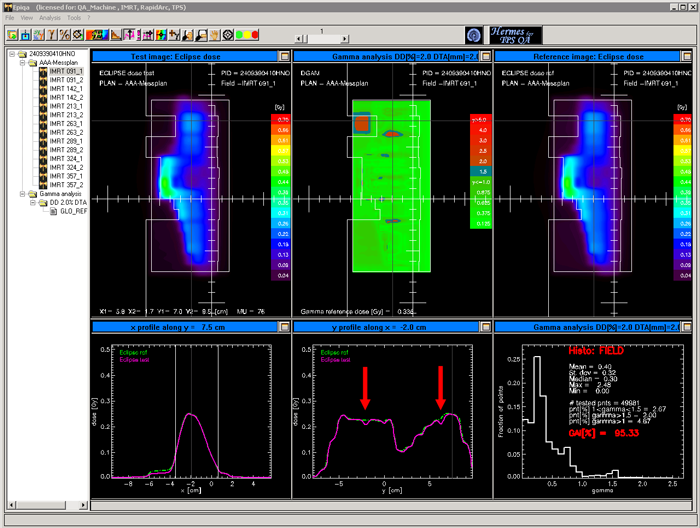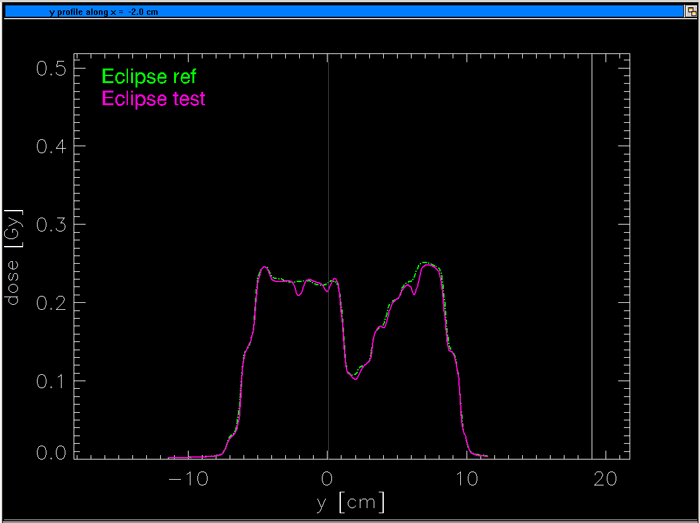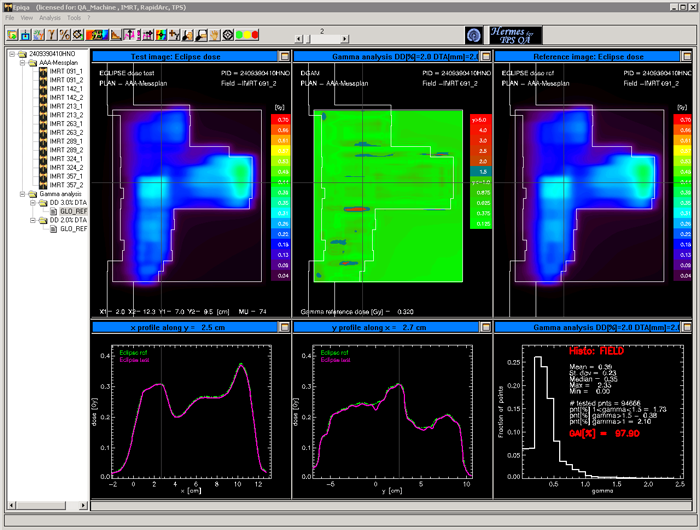Comparing two calculations
In this example, EPIQA is used to evaluate the overall dosimetric changes that arise from the implementation of a new Eclipse dose calculation algorithm configured with new Eclipse beam data. Our old beam model (AAA 8.6.14 containing beam data which had been measured with a 0.125cm3 chamber long ago) shall be compared to the newer beam model (AAA 10.0.28 algorithm configured with semiconductor beam data).
The evaluation is done in the Hermes module of EPIQA.
A 7 field IMRT plan (each field has 2 carriage groups) is first calculated in Eclipse with our old AAA8614 calculation model. The plan is copied, the copy is changed to AAA10028 and recalculated. Calculation grid size in Eclipse is 1.5 mm. DICOM plan and calculated dose matrices in dmax are exported from Eclipse and loaded in EPIQA. Gamma evaluation in EPIQA is done with 2%/2mm.
"ECLIPSE test" (left side in the screenshots) shall denote AAA10028 calculation, "ECLIPSE reference" (right side) is the AAA8614 result. The first image shows two things: the regions outside the complete irradiation area outline (CIAO) are different (red area in the upper right corner of the gamma map), and the AAA 10.0.28 calculation takes the tongue and groove effect of the MLC into account (red arrows in the longitudinal profiles):
Since the calculation grid size in Eclipse was set to 1.5 mm, the fluence valleys caused by the leaf tongues are not as sharp as the corresponding underdosages on measured PV images would be. Here is a larger version of the longitudinal profiles:
Due to the beam data with sharper (semiconductor) penumbras, the AAA10028 calculation generally shows higher spatial frequencies.
Another field with tongue and groove effect is this one:
Here are larger versions of the AAA10028 calculation and the profiles.
Hermes is an excellent tool for comparing two Eclipse calculations of the same treatment plan, field by field. It is ideal when a new algorithm is implemented or when Eclipse is configured with new beam data (both actions require recommissioning of the TPS). If the expected changes are small, a tighter criterion, like 1%/1mm should be used.
Hermes has no corresponding functionality in Varian Portal Dosimetry.


